You just drove home with your new puppy or dog. You’re excited and a bit nervous — there are many good years ahead for your growing family. When you’ve unpacked the car, you look down at your new canine best friend.
“Sit?” you ask.
Your dog looks at you.
It dawns on you that dogs don’t come into your home speaking English — or, at least this one doesn’t. Sit apparently does not mean sit to your dog. At least, not yet.
You try the other basics: “Lie down?” “Roll over?”
Nothing.
Don’t worry — it’s usually not very tricky to teach your new pet these skills, and we’ll outline the entire process to make it even easier. Here’s how to teach your dog these three basic cues, from start to finish.
Teaching Your Dog to Sit, Lie Down, and Roll Over: Key Takeaways
- Sit, lie down, and roll over are three pretty simple skills that are fun and helpful to teach your dog. Sit and lie down are much easier skills to teach than roll over, but with some patience and practice, most dogs can master all three.
- There are two basic methods to teach your dog to sit and lie down — luring and capturing. Luring requires you to persuade your dog to perform the skill in question, while capturing requires you to simply reward and praise your dog once he performs the desired behavior on his own.
- Capturing isn’t really a good technique for teaching your dog to roll over, so you’ll have to lure him instead. But with a few treats and the right approach, you will usually be able to achieve success.
Why Should My Dog Sit, Lie Down, and Roll Over?
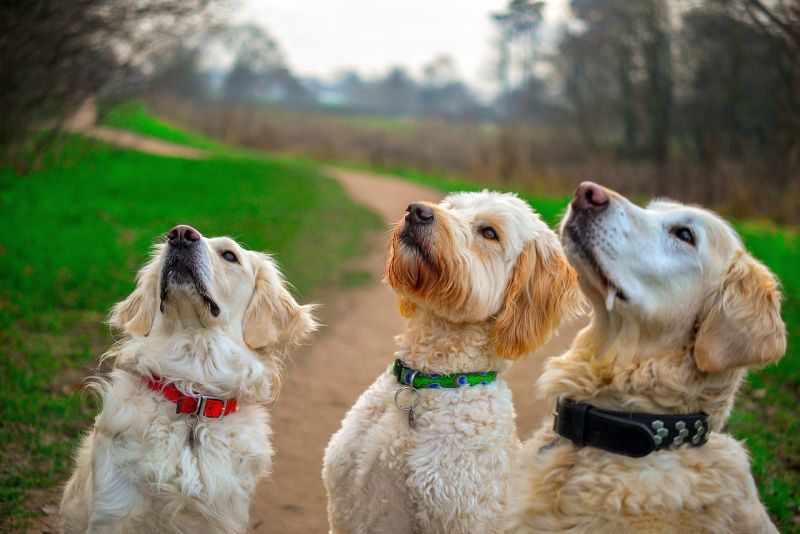
As a professional dog trainer and canine behavioral consultant, sit and lie down are two of those cues that I teach most of my clients right away. They’re useful things for dogs to know. Roll over isn’t necessarily useful, but it sure is a cute trick!
When a dog is sitting or lying down, a dog can’t jump on guests, run out the front door, or hop on the furniture.
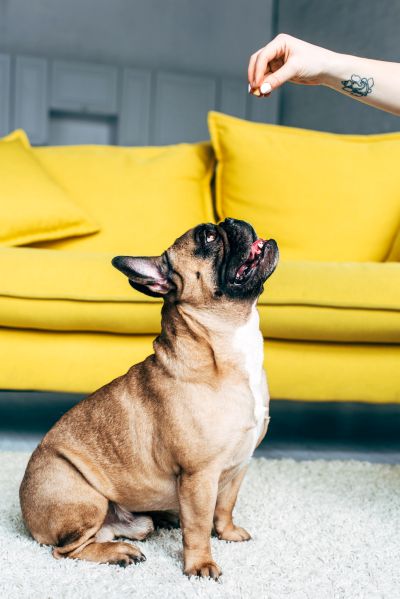
I instruct my clients to tell their dogs to sit as a polite way to greet strangers, wait for dinner, and wait before going through doors. Even better, many of these client canines learn that sitting without being asked is a great way to get what they want.
Here’s how it plays out:
The dog decides that he wants something, so he sits and looks between you and the desired object.
This usually results in his person giving him the object of his desire, which reinforces the notion that sitting is just a good strategy for getting what he wants.
My own dog sits to “ask” for me to take him for a walk or to share a nibble of food. This is called an “offered” behavior. Think of it as a polite way to beg, like a toddler saying “please.”
Teaching a dog to sit, both on cue and as an “offered” behavior, is often a new owner’s first endeavor.
You can teach your dog to sit as soon as you adopt or purchase him.
Lie down — the other primary skill I start teaching most doggos — is also a helpful skill to teach your pup. For starters, it’s incredibly useful for building relaxation for your dog. But it also helps him learn to stay put in distracting scenarios.
What You Need to Teach Your Dog to Sit, Lie Down, and Roll Over
You don’t need much to teach your dog to sit, lie down, and roll over — just your dog and a few high-value training treats (you may also want a training treat pouch for added convenience).

In fact, you should always use treats or other rewards when training your dog a new skill. Think of these treats as your dog’s paycheck. He’ll want to keep training and being a better dog, because that’s how he gets good things.
You can fade out the treats later, but only after your dog is already successful with the cue 100% of the time. Don’t even think about fading out rewards before your dog is highly compliant and skilled!
Modern dog trainers employ one of two main methods for teaching dogs to sit or lie down. These methods are called “capturing” and “luring”
Capturing involves waiting for your dog to exhibit the desired behavior on his own, and then rewarding him for it and building an association between the behavior and a cue of some type (perhaps saying “Sit!” or using a hand signal).
Capturing is my favorite way to train a dog when I’m working with clients at Journey Dog Training because it helps my clients see all the things that their dog does right.
Luring, by contrast, involves persuasion — you “lure” your dog into performing the desired behavior, usually with the help of a treat or some other reward.
For roll over, your dog will likely need to be lured: Capturing won’t work.
Capturing Your Dog Sitting
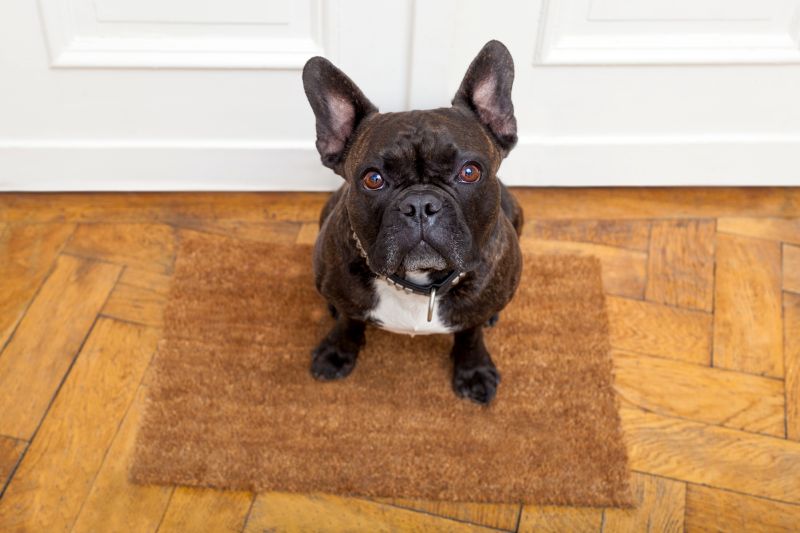
Capturing is often the easiest method of teaching a dog to sit.
- Grab a few treats. Then wait. Your dog might ignore you, or he might notice the treats and start jumping or barking. Either way, just be patient and wait. If you scold your dog for jumping or barking, your attention might be fun for him and he’ll keep doing it — or he’ll get scared and want to quit training! So be patient. Eventually, most dogs will sit.
- At the exact moment that his bum touches the ground, praise him and give him a treat. The verbal praise is not his reward — it marks the moment that he does the right thing; the treat simply reinforces the association.
That’s all there is to it!
If you have one of those rare rascals who doesn’t sit in this scenario, you can simply praise and quickly reward your dog when you catch him sitting around the house (one of the many reasons it’s wise to have treats at the ready in several places in your home).
This method can take a little while at first, but your dog will quickly catch onto the fact that he’s getting a tasty treat each time he sits. He’ll start to sit more often, and you can keep rewarding him.
This method also helps teach your dog that he can get treats by trying out different behaviors.
Many trainers believe that this creates a dog that is more creative and attentive. As another benefit, you don’t have to worry about your dog only sitting when you hold a treat up to his nose, because he never learned that way.
Luring Your Dog to Sit
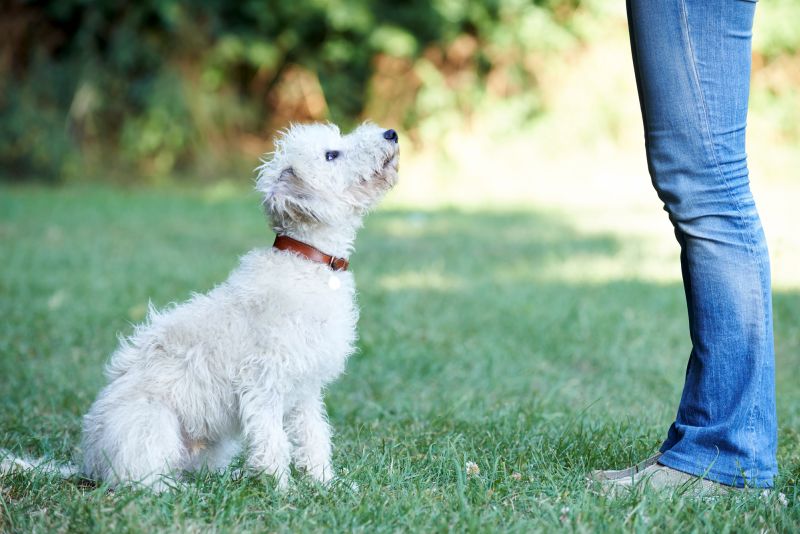
As explained earlier, luring involves persuading your dog to perform a behavior — sitting, in this case — by using a treat or other type of reward.
This method is generally a quicker way to get results on day one. The downside of luring is that it can be challenging to stop luring the dog with a treat.
That’s why it’s important to stop using treats as a lure quickly. Otherwise, you’ll end up with a dog who only obeys cues when you have treats in your hand.
- Grab a tasty treat. Call your dog over and let him sniff it.
- Slowly move your hand up and backwards, so your dog’s head moves with your hand. If your dog loses interest or stops following the treat with his snoot, then either get better treats or move more slowly. You might have to give your dog a treat just for following your treat at first. However, the important thing is that, as your dog moves his head up and back to follow the treat, he’ll get a bit uncomfortable. Most dogs will sit to straighten out their spine, making it easier to watch the treat.
- Reward your pooch the moment his booty hits the ground! You have successfully lured him into the sitting position, and he’s performed admirably.
- Repeat these steps five times or so. Don’t stop until your dog is sitting with confidence and fluidity.
- At this point, you’re ready to remove the treat from your hand and repeat the motion several more times. Still give your dog a treat each time he sits, but don’t keep the treat in your hand. This hand motion will become a physical cue.
As you continue practicing, your job is to make the luring hand motion smaller and smaller. This is the hard part about luring! If you spend too much time luring the dog with a treat in your hand, it can be very difficult to remove the treat at all.
Avoid using physical manipulation to teach your dog to sit.
Pulling up on the leash while pushing down on your dog’s butt — an old school technique that’s been jettisoned by most modern, force-free trainers — isn’t a very clear way to get what you want.
Plus, it can teach your dog that your hands cause him discomfort, which is no good. Many dogs taught this way struggle to sit without physical pressure from their owners.
Capturing Your Dog Lying Down

Now that you’ve successfully taught your doggo to sit, you can move on to teaching him to lie down. As with teaching your dog to sit, capturing is generally the best method to employ.
Most dogs will lie down at some point during the day, and you can easily praise them and then reward them with a treat. For other behaviors, you might have to get more creative and utilize some “shaping,” or training using successive approximations.
Don’t let your eyes glaze over yet. We’ll cover that later.
Most dogs will lie down when they are tired or relaxed. Sitting and watching TV or reading a book (or writing a blog post) is a perfect time for training your dog to lie down.
- Set up the right situation for capturing your dog lying down. In order to capture your dog lying down, you’ll need to set up a very relaxed and boring training environment. Get some treats ready and wait. It’s smart to close the door so that your dog doesn’t wander off where you can’t see him. It’s hard to train a dog you can’t see! Eventually, your dog will likely lie down.
- “Capture” the behavior as before, by verbally praising him when he lies down. This verbal praise lets him know that he did the right thing, and that a treat is on its way. I often use a clicker while training dogs instead of verbal praise, but either method will work.
- Once you’ve praised him, give him a treat. This further establishes that he’s performed a desirable action, and he’s been a good pupper.
- Repeat the process to drive the lesson home. To speed up “capture” training, you can toss a second treat a bit further away. This will make your dog stand up as he goes to eat it. When he lies down again, praise and reward again.
- Start building his “fluency” with the skill. As your dog gets better at the “lie down to get a treat” game, he will start to lie down as soon as he returns to you. That’s great! When he gets to that point, you’re ready to add in the verbal cue and hand signal.
When training your dog to lie down, use treats after praise (or clicker) at first. The praise acts like a warning that more goodies are on their way. Eventually, you will be able to give your dog fewer treats.
But at first, you’ll want to use treats to communicate that your dog is doing the right thing.
Have more than one doggo? Learn how to train multiple dogs at one time here!
Luring Your Dog to Lie Down
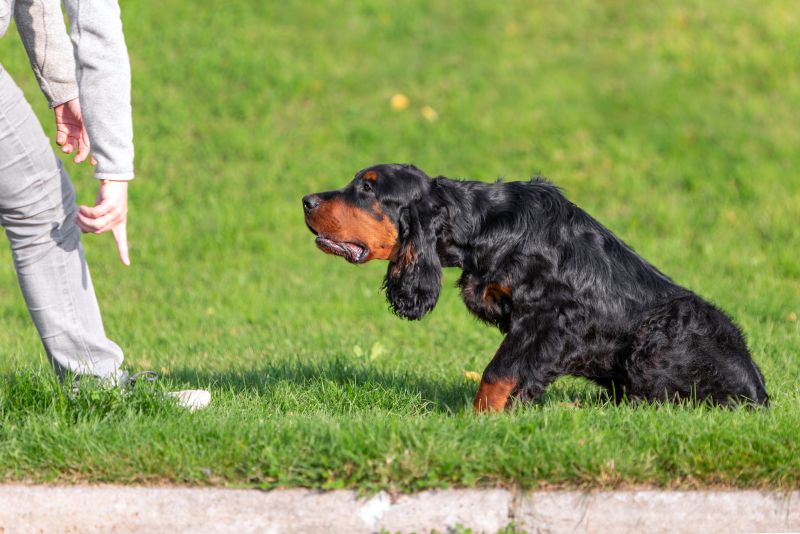
If you’re having a hard time with capture training, you may want to try lure training instead. Lure training relies on teaching your dog to follow a piece of food to do what you want.
Luring is often faster and easier to understand for the human than capture training — but it has a few downsides. For example, lure training can result in dogs that only do what you want when you have food, so proceed with caution and try capture training first.
- Prepare to teach your dog the cue. Start by grabbing and holding a tasty treat in your hand.
- Move your hand a few inches and then reward your dog for following it with his nose. Repeat this a few times. This teaches your dog to follow the food in your hand.
- Repeat step #2, but this time, lower your hand slowly towards the ground. Open your hand and reward him a few times, once your hand reaches the halfway point between your dog’s standing height and the ground. Your dog’s head just has to lower down to chest level for this step. Repeat this just a few times. Repeat the entire process, but this time, don’t reward him until your knuckles are on the ground. If your dog lies all the way down with his chest and elbows on the floor, give him several treats. You’ve done it!
- Begin fading out the treat. This is ultra-important if you want to be able to cue your dog to lie down without a treat in your hand (and your dog’s nose on your hand). After just four or five repetitions of step #4, repeat it without a treat in your hand. Reward your dog from a treat in your other hand once he lies down.
- Begin refining the skill by reducing the extent of your luring. At this point, your dog will lie down without a food lure in your hand — that’s awesome! But you’re still kneeling on the ground with your dog and getting slime on your fingers. So, start to gradually reduce the size of your hand motion until you’re able to stand and just give a small downwards hand motion for your dog to lie down. If you make it to this point, your dog already has a hand signal for lie down!
Understand that sometimes, luring doesn’t work. Your dog might just lower his head or bend his elbows, or give up. See our troubleshooting guide below if you can’t get your dog to lie down using capturing or luring.
Teaching your dog to lie down can be tricky — especially when you’re working on lure training, . If you’re really stuck, check out these trainer’s tricks to try when addressing different sorts of pitfalls and problems:
- My dog will just lower his head. Don’t worry if you’re having a hard time getting your dog to lie down completely — you’re not alone. Try putting your dog up on a platform, like a bed or stairway (not the stairs themselves). Now lure your dog. Since you can put your hand lower than your dog’s feet, this encourages your dog to lie down. Just note that some dogs will just hop off the elevated object instead of lying down. In this case, you have to get really creative. Try putting your hand with treats in it under a raised bed or low coffee table. Your dog will have to lie down in order to get his head and shoulders under the object and get to the treat.
- My dog is losing interest in training. In this case, your treats might be too boring, or your training environment may be too distracting. Either get better training treats (like hot dog bits or boiled chicken) or move your training to a less distracting area.
- My dog doesn’t like treats. Some dogs simply don’t like treats all that much. If you’ve really tried a variety of treats and nothing is working, it’s time to think outside the box. Some dogs will engage in training in exchange for a training toy or other reward — but this definitely makes training harder! Try using a variety of treats, a boring environment, or toys before giving up hope.
- My dog is jumping all over me to get to the treats. Most dogs love treats. Some dogs love treats so much that they can hardly think straight around them. If you’ve got a chow hound like this on your hands, try to make treats less exciting by using cut-up baby carrots or normal dog food instead of meaty treats.
Still stuck? Try playing some impulse control games to teach your dog to keep his head around treats.
Luring a Dog To Roll Over
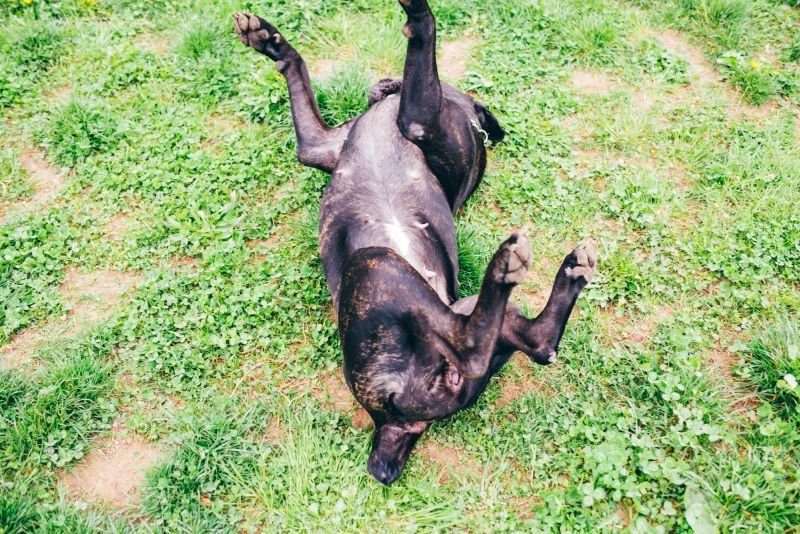
As mentioned above, capturing is unlikely to work to teach a dog to roll over. Instead, we’ll rely heavily on luring. This one can be a bit tricky, so make sure you’ve had success teaching your dog to sit or lie down first!
You may want to break this up into several short training sessions rather than trying to push through the entire program in one go. Most dogs won’t learn this trick in a single session.
- Cue or lure your dog into lying down. Give him a treat to encourage him to stay in position.
- Grab a treat and encourage your dog to follow it with his nose. Bring that treat towards the area between your dog’s ribs and hips. As your dog follows that treat with his nose, release the treat to reward the approximations he’s making! Soon your dog will readily be rolling partway over onto one side; he should be rolling over onto one hip. Make sure not to pull the lure away too fast — you want a close connection between your dog’s nose and the treat!
- Once your dog is rolling over onto one hip, start pulling the lure further towards his hip and even up a bit to try and get him to drop his elbow and flop over onto one side. This is a tricky step — so keep at it and stay patient!
- Reward heavily with your dog lying flat on his side! You’ve actually just taught him to “play dead,” congrats!
- Now, you want to encourage your dog to roll fully over! Start with him lying down normally, and then start to bring the lure towards his hip like before. But rather than rewarding him when he’s flat, keep going. Bring the lure and some praise all the way over. Jackpot him when he gets it right!
It’s more physically challenging for your dog to roll over in controlled steps; use the lure and some encouragement to help your dog use speed and momentum to roll fully over.
***
Sit, down, and roll over are some of the first tricks many dog owners want to learn. Now you’ve got the basics down for your dog. Better yet, you’ve learned many of the introductory principles for teaching your dog a variety of skills.
Have you used luring or capturing to teach your dog how to sit, lie down, or roll over? Which one worked better for you? Let us know your experiences in the comments below!
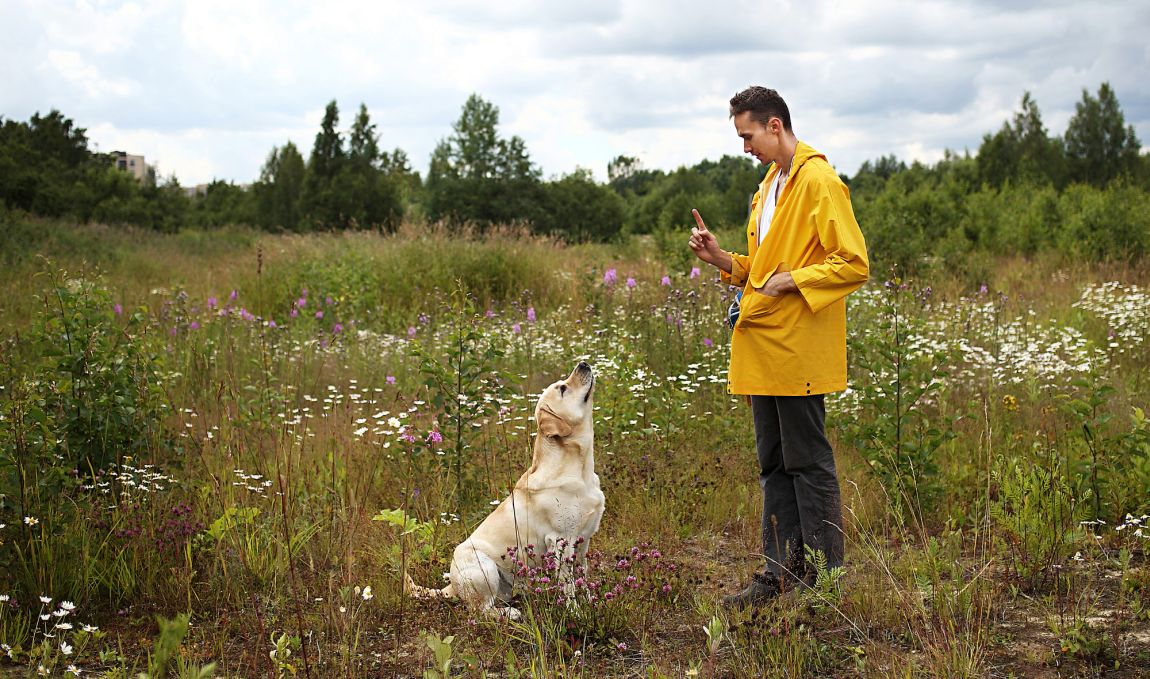

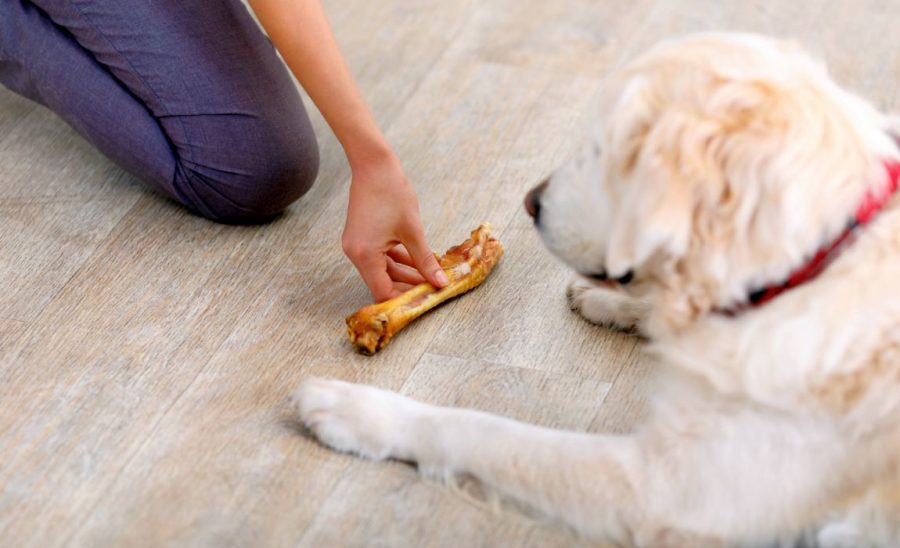


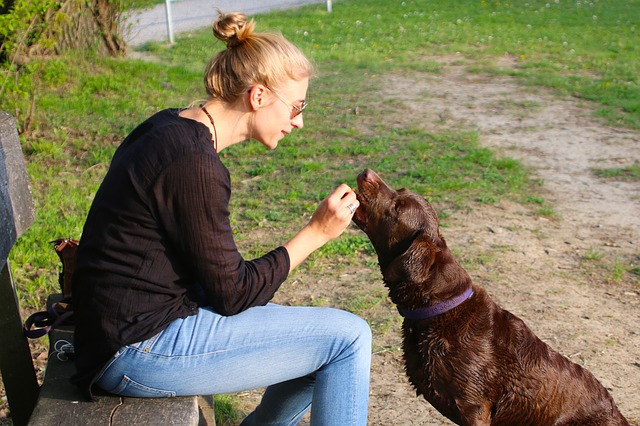
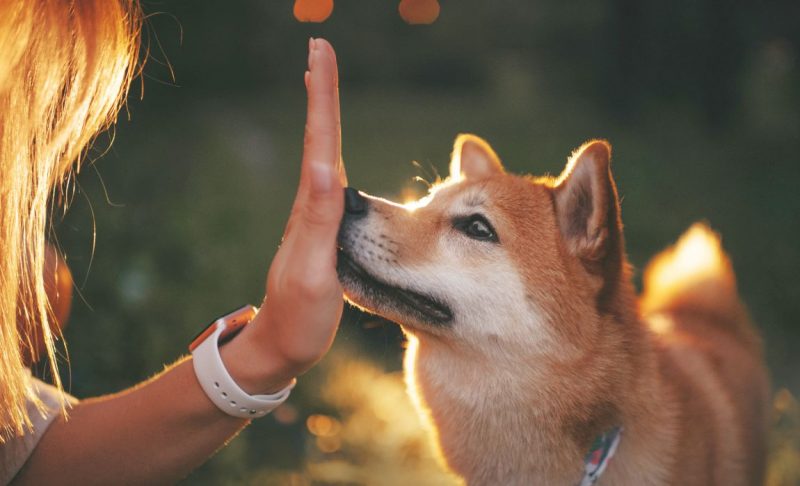

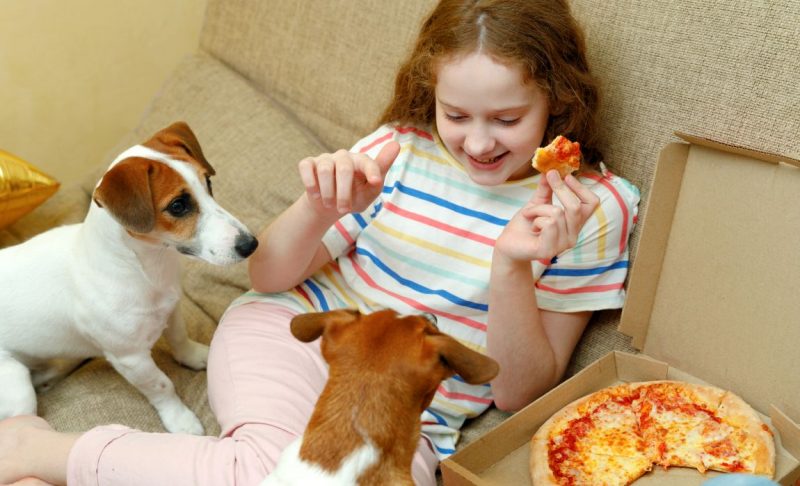
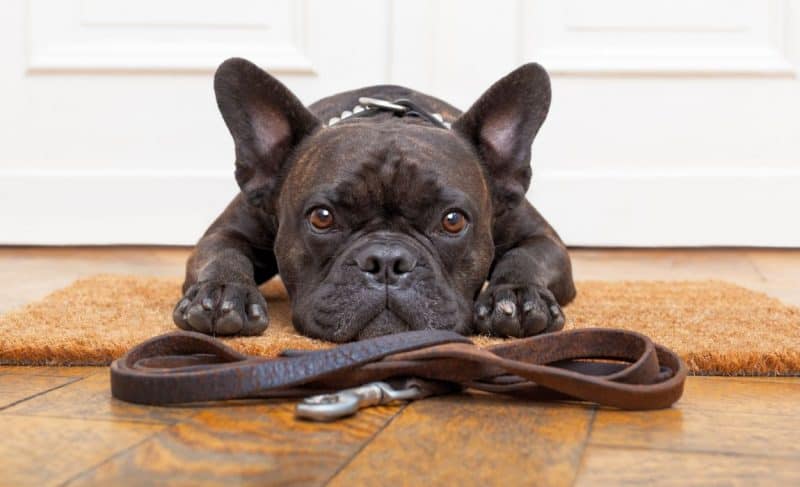

Leave a Comment